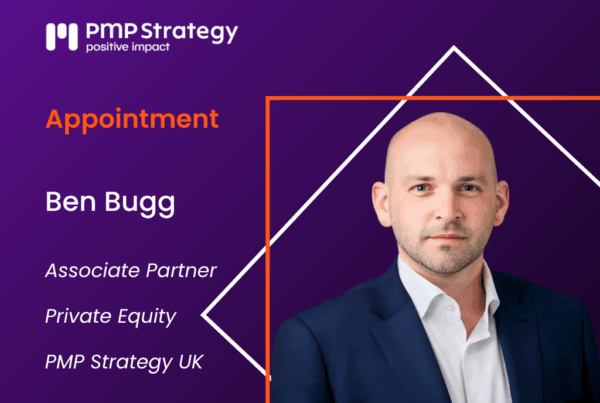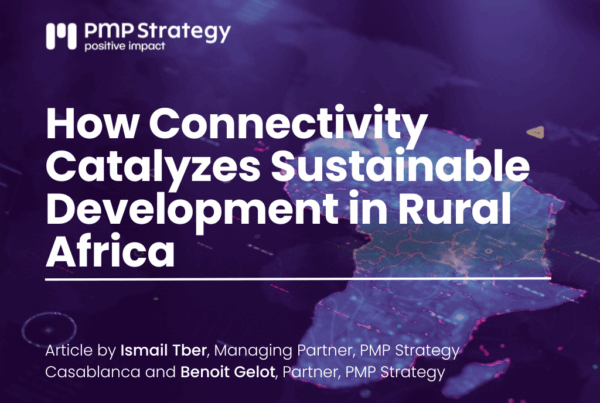Article published in Telecom Review Africa on November 1st, by James Semple, Senior Manager, Telecom, Media & Technology, PMP Strategy UK, Jordan Kotler, Senior Consultant, Telecom, Media & Technology, PMP Strategy UK.
Introduction
Cloud adoption in Africa is set for rapid growth by the end of the decade. PMP Strategy forecasts suggest a >30% CAGR in hyperscaler demand from 2023-2030, resulting in over 1,400 MW of live capacity across the continent to serve the needs of hyperscalers alone. Driving these trends are a confluence of factors, including economic growth, the need for digital transformation, and the benefits of cloud computing seen for many years now in more mature markets.
Added to the inherent challenges faced by African enterprises, such as significant data centre infrastructure investment required to meet demand, a range of differing regulatory environments, and limited end-to-end connectivity services, is the fact that cloud adoption is becoming increasingly complex due to the growing need for organizations to implement clouds from multiple providers.
The concept of the meta cloud, which integrates and manages multiple cloud services and environments, offers a promising solution. As implementations of the meta cloud remain nascent, this article speculates on some of the key enablers and components of the meta cloud in the context of Africa.
Key Developments to Support the Meta Cloud in Africa
- Cloud Services Major cloud players like AWS, Microsoft Azure, and Google Cloud offer robust and scalable services that can support African enterprises. While the only fully deployed cloud regions in Africa are located in South Africa, larger-scale deployment will likely soon take place across Nigeria, Kenya, Egypt, and Morocco, where hyperscaler local zones have already been deployed. Huawei, Oracle, Alibaba, and Akamai’s initial deployments are also likely to grow across the continent, adding to the complexity of choice in public cloud solutions.
- Connectivity Solutions Reliable and high-speed internet connectivity is crucial for effective cloud operations. Investments in subsea cables and terrestrial networks are improving connectivity across the continent. For instance, the deployment of new submarine cables like 2Africa and Equiano has significantly increased the total rolled-out capacity, enhancing connectivity between Africa and other continents.
Content Delivery Networks (CDNs) help reduce latency and improve the delivery of popular content, enhancing user experience and performance. Akamai and Cloudflare are examples of CDNs that have established a presence in Africa, providing faster and more reliable content delivery.
- Data Centres Over 700 MW of additional capacity has been announced to be live by 2030 to meet the rocketing demand from hyperscalers and enterprises—more announcements will undoubtedly be made. Establishing data centres within African countries helps reduce latency, comply with data sovereignty laws, and improve service reliability. Edge data centres bring computing resources closer to end-users. South Africa, Nigeria, and Kenya are leading the way with significant investments in data centre infrastructure from the likes of Teraco, OADC, Africa Data Centers, Vantage, and MDXi.
Key Tools to Consider in the Meta Cloud in Africa
- Orchestration and Management Tools Kubernetes, Terraform, and Ansible are popular tools for managing and orchestrating cloud services across multiple providers. These tools enable seamless integration and management of services, reducing complexity and improving efficiency, and will be important for realizing the meta cloud in Africa.
Multi-Cloud Management Platforms enable seamless integration and management of services from different cloud providers, simplifying operations and reducing complexity. For example, Cloudify and RightScale (now part of Flexera) offer multi-cloud management solutions that could support African enterprises in managing their cloud environments.
- Monitoring and Analytics Solutions like Prometheus and Grafana help monitor the performance and health of cloud services. These tools provide real-time insights into system performance, enabling proactive management and optimization.
Analytics platforms provide real-time insights, enabling proactive management and optimization of cloud resources. For example, Google Analytics and AWS CloudWatch offer real-time data insights that help African enterprises make informed decisions.
- Data Integration and Management Tools like Apache Kafka and Talend facilitate data integration across different cloud environments. These tools ensure seamless data flow and integration, enabling better decision-making and operational efficiency.
Ensuring data consistency and synchronization is vital for seamless operations and decision-making. African enterprises are increasingly adopting data synchronization solutions to ensure data integrity and reliability.
- Cost Management Solutions like CloudHealth and AWS Cost Explorer help track and optimize cloud spending, ensuring cost-efficiency. These tools provide detailed insights into cloud costs, enabling African enterprises to manage their budgets effectively.
- DevOps and CI/CD Tools Tools like Jenkins and GitLab CI/CD support continuous integration and deployment, enhancing development efficiency and agility. These tools enable African enterprises to streamline their development processes and deliver high-quality software faster.
Conclusion
The meta cloud presents a transformative opportunity for African enterprises, offering a way to manage multiple cloud environments effectively and efficiently, particularly as the cloud environment rapidly evolves across the continent. Developers need to familiarize themselves at an early stage with the evolving essential tools, infrastructure, and environment for the meta cloud in the near term. The meta cloud looks set to drive digital transformation, enhance operational efficiency, and unlock new growth opportunities across the continent.




